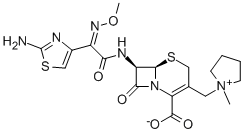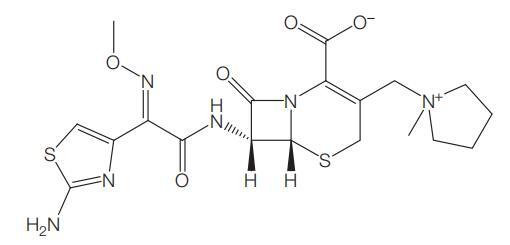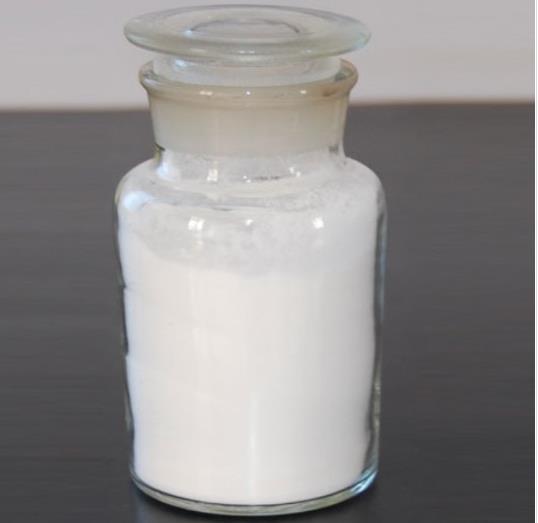Cefepime: Indications, Mechanism of Action and Side Effects
Cefepime is a broad-spectrum fourth-generation cephalosporin with activity against both gram-positive and gram-negative bacteria, including Pseudomonas aeruginosa. Cefepime is most commonly used for urinary tract infections, soft tissue infections, and febrile neutropenia. Cefepime does not work against influenza or viral infections.
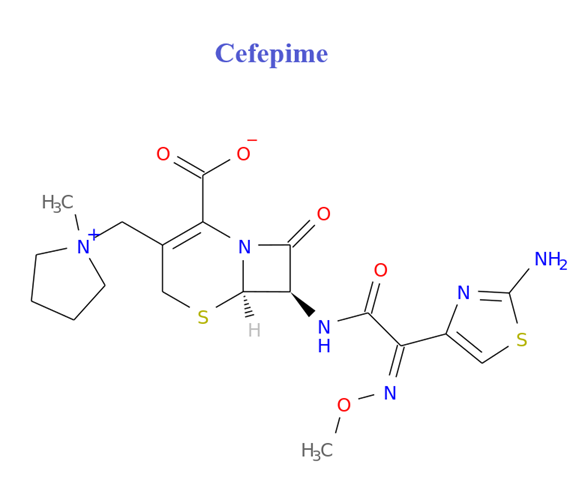
Indications
Cefepime is approved by the FDA for treatment:
(1) pneumonia
(2) complicated and uncomplicated urinary tract infections
(3) Skin and soft tissue infections
(4) Complicated intra-abdominal infections (with metronidazole)
(5) Empirical treatment of neutropenic fever
In February 2024, cefepime/enmetazobactam was approved in the USA for use in adults with complicated urinary tract infections (cUTI) including pyelonephritis, caused by susceptible strains of Escherichia coli, Klebsiella pneumoniae, Pseudomonas aeruginosa, Proteus mirabilis, and Enterobacter cloacae complex. In March 2024, cefepime/enmetazobactam was approved in the EU for use in adults for the treatment of cUTI, including pyelonephritis, and hospital-acquired pneumonia, including ventilator associated pneumonia, and the treatment of patients with bacteraemia occurring in association with or suspected to be associated with any of these infections.
Mechanism of Action
Cefepime belongs to the β-lactam group of antibiotics and its mechanism of action is similar to that of other β-lactam antibiotics. Cefepime inhibits bacterial cell wall synthesis by covalently binding to the enzyme responsible for the final step of transpeptidation in peptidoglycan wall synthesis. This binding causes cell wall defects, leading to autolysis and subsequent biological death.
In addition, Cefepime has higher Gram-negative coverage and more stable resistance to beta-lactamases than third-generation cephalosporins. It penetrates the cell walls of Gram-negative bacteria more rapidly. This is the reason why cefepime covers a wider range of Gram-negative bacteria than third-generation cephalosporins.
Side Effects
The most common adverse reactions to Cefepime in clinical studies included:
Adults: diarrhoea and rash
Children: fever, diarrhoea and rash
Other adverse reactions include:
Nervous system: headache, fever, neurotoxicity, disorientation, seizures, and coma, confusion
gastrointestinal: nausea, vomiting, loss of appetite, abdominal pain, liver damage, colitis
Genitourinary: vaginitis, kidney damage
Skin problems: local site injection irritation, itching, urticaria, Stevens-Johnson syndrome, and erythema multiforme
One serious adverse reaction, neurotoxicity (CIN), with symptoms usually appearing 4 days after starting cefepime, requires special attention. Risk factors include renal insufficiency, overdose, elevated serum cefepime concentrations, and a history of previous brain injury.Adverse effects of CIN include encephalopathy, seizures, and coma, which may be alleviated by discontinuation of the drug, taking antiepileptic medications, or hemodialysis.
References:
[1] SMITH M, MEHDIZADEH C, MOURKUS A, et al. Renally Dosed Cefepime Leading to Cefepime-Induced Neurotoxicity: A Case Report[J]. Cureus, 2024. DOI:10.7759/cureus.52162.
[2] KEAM S J. Cefepime/Enmetazobactam: First Approval.[J]. Drugs, 2024: 737-744. DOI:10.1007/s40265-024-02035-2.
[3] HORACE RHODES HAMBRICK. Cefepime-Associated Neurotoxicity in a Pediatric Patient With Stage V Chronic Kidney Disease.[J]. Journal of pharmacy practice, 2024. DOI:10.1177/08971900221125000.
You may like
Related articles And Qustion
Lastest Price from Cefepime manufacturers
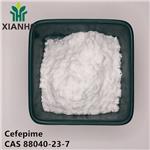
US $0.00/KG2025-04-22
- CAS:
- 88040-23-7
- Min. Order:
- 1KG
- Purity:
- 0.99
- Supply Ability:
- 1000KG
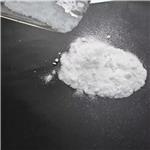
US $10.00/KG2025-04-21
- CAS:
- 88040-23-7
- Min. Order:
- 1KG
- Purity:
- 99%
- Supply Ability:
- 10 mt
